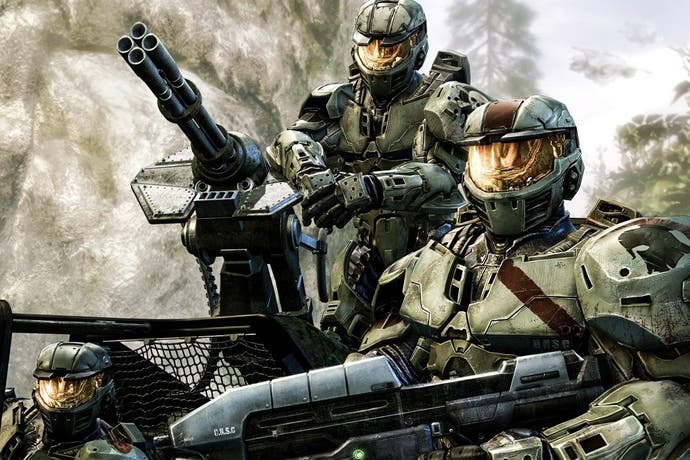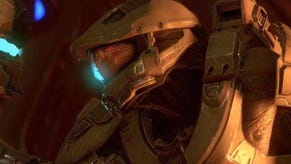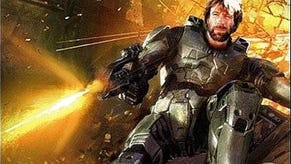When Halo went back to its RTS roots
The making of Halo Wars.
As Microsoft sets out to reinvent Halo yet again with Halo 5: Guardians - festooning Master Chief's crenelated bulk with jumpjets and pop-out holographic reticules, like a long-serving plastic Christmas tree - it's worth digging up the last game to take similarly drastic yet successful liberties with Bungie's old action sandbox. Ensemble's Halo Wars rumbled onto shelves at a comfortable time for Xbox, a year or so ahead of the first Kinect sensor, and was spared the pressures and mammoth sales targets of a core numbered Halo. But in other respects, the project's challenges leave Halo 5's in the shadow.
It's not just that Halo Wars was a real-time strategy game for controllers, that hardest of hard-sells. The game began life as a different IP, unburdened by association with one of the leading lights of another genre, and was completed on the eve of its developer's closure, Microsoft having fallen out of love with real-time strategy at large. According to studio founder Tony Goodman, the platform holder's belated request that the game be rebranded set work back a year, as Ensemble struggled with the same elementary difficulty now faced by 343 with the squad-driven Halo 5 - the extent to which Halo's space opera and unit ecology are predicated on the antics of a single warrior who can flatten tanks with his fists.
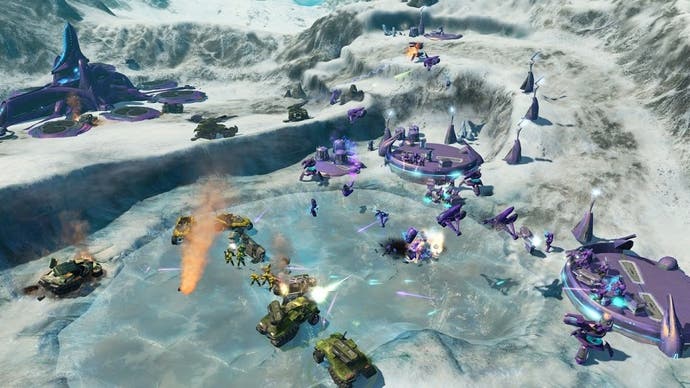
"Don't get me started on the Spartans," reflects Ensemble's former director of technology and lead designer David Pottinger. "Toughest unit we ever had to deal with at Ensemble. Taking the iconic face of an entire franchise and balancing it to [work with rock-paper-scissors RTS design] was difficult enough that we just cheated. The UNSC could get a handful of Spartans and that was it. In the hands of experts, they were deadly." You won't win many battles outright using Spartans in Halo Wars - they can't, of course, be recruited from the off - but any opponent who goes overboard on heavy armour may live to regret it, as costly vehicles are pounced upon by swaggering super-soldiers and turned against their owner.
Pottinger is now CEO of BonusXP following stints at Robot Entertainment, one of several studios founded after Microsoft shuttered Ensemble in 2009, and Zynga. His recent projects show the latter's influence - they include match-3/strategy hybrid Cavemania for touchscreens and Servo, a mech RTS for PCs with highly customisable hero units - but all owe something fundamental to the Ensemble era, and in particular, the trial-by-fire of reconciling approaches from the developer's reputation-making Age of Empires series with Halo and Xbox.
"One of the earliest things the team did was to convert Age of Mythology to a controller," Pottinger recalls, speaking to me via email. "Virtually every single UI feature was somehow doable on a controller. That was really cool. It made us believe that the gameplay could work. But, like some prototype features, it was a double-edged sword. Because we had all that stuff working on a controller, we hung onto the Age gameplay for far too long into the real development.
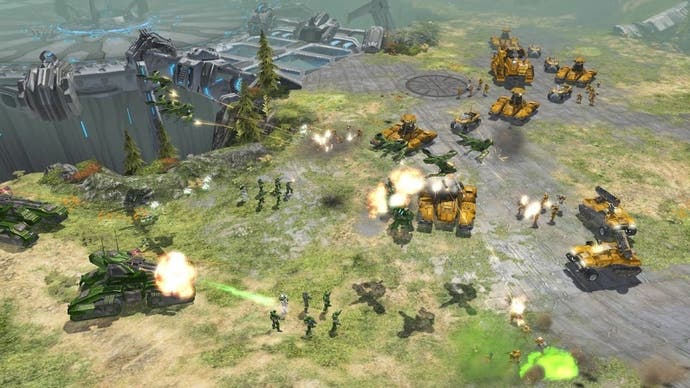
"I think the biggest challenge with Halo Wars revolved around that identity issue. Was it a game for console players who might like an RTS or a different take on Halo? Or, was it a game for Age or Starcraft players that we wanted to attract to the console? We struggled with that for a long time. The iterative Ensemble process, which we still pretty much use at Bonus today, struggles when the team isn't aligned on the same goal. 90 per cent of the time, it's awesome. We playtest and the right choices and better features emerge from the pack. That doesn't really work for vision-level issues. The specific problem on Halo Wars is that we didn't even know it was a vision-level issue right away. We naively assumed we could 'do it all'." It's possible, Pottinger adds, that certain much-decried shortcomings like the absence of control groups might have been addressed had Ensemble spent less time wrestling with the broad thrust of the game.
Pick up Halo Wars today and you may be struck by how it feels both like and unlike Halo. The DNA from Ensemble's earlier work is obvious: there are town centre-style base hubs, for instance, which are upgraded in order to access more advanced unit types, and tide-turning uber abilities such as the UNSC's orbital strikes, which compare to the god powers in Age of Mythology. Campaign missions are a genre-standard mix of straight-up battles of attrition and somewhat more esoteric objective-driven maps - the highlight is perhaps duelling the Flood on the hull of the Spirit of Fire, your flagship, as energy waves periodically rake its surface. But the deeper you delve, the more comprehensively and convincingly Halo's influence is felt.
It begins with the delicious way those buildings break. Part of Halo's appeal is simply that its props are such enormous, giddy fun to abuse, whether it be a Spartan laser drop-kicking a Shade turret into the skybox, or the toe-curling crash of a Wraith tank falling apart. It's a world of bubble-wrap, waiting to be poked at and stamped on, and while balancing considerations oblige Ensemble to rein in the loopier excesses, Halo Wars captures this gorgeous tactility where it counts, with Covenant outposts that shatter and evaporate like crumpling icebergs.

Then there's the slickness of the interface and handling, which is more redolent of a shooter at times than StarCraft and co. The cursor is a cross-hair, always dead-centre of the screen, with group selection performed by holding down A button charge-the-shot style to fatten the reticule, rather than clicking and dragging. Radial menus unfurl from that cursor, to be tugged around with the analog stick, much as weapons and spells do in the likes of Bioshock. Pleasingly, base templates follow a similar nuclear logic - a fat juicy reactor in the middle, like an oil drum framed between your gunsights, with facilities and defences springing up from the earth around it. Championed by lead designer Graeme Devine, otherwise known for his work on Quake 3: Arena, the concept of a circle interface informs Halo Wars on several levels.
It's been proposed that the deftness and facility with which Ensemble adapted Halo reflects the IP's prehistory as an RTS - an origin point that is apparent, even today, in Halo 5's generous vehicle line-up and the way different flavours of Covenant interrelate. In practice, Pottinger and his cohorts found that unearthing these roots wasn't as straightforward as yanking back the camera. "By the time a game transfers genres, there aren't a whole lot of the original pieces that are intact. Warthogs are awesome as a shooter vehicle, but in an RTS, they honestly don't work so well. The first E3 we demoed Halo Wars, we had this huge sequence where Warthogs went jumping over cliffs and, in general, acting very Warthoggy. We caught a little flak because sometimes the Hogs wouldn't make the jump. Well, that was because we were trying to sim them like an RTS unit.
"You can't cheat things in an RTS the way you can cheat them in a shooter (and vice versa, of course). We fought with that for a long time. Eventually, we just had to make them work like a more sedate RTS unit - e.g. if you grouped them with infantry, they'd move slowly - so that the overall combat felt more like an RTS. Then, of course, the feedback you get is that they don't feel like Warthogs. Bringing a beloved, established franchise to a new genre, even if it was once, over 10 years ago, conceived for that genre, isn't exactly easy."
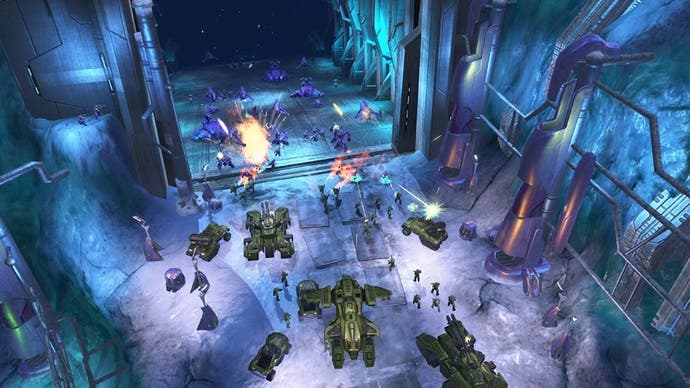
Inasmuch as anything is simple in games development, the creation of Halo Wars 2 should be relatively straightforward - the mission-critical job of breaching the conceptual barrier between genres is, after all, over and done with. New developer The Creative Assembly has been at pains to state that it'll build on Ensemble's achievement, rather than flying in ideas from its own strategy franchises. For his part, Pottinger is confident that the Total War team will do Ensemble's hard work justice. "Their strategy experience is certainly a little different to Ensemble's, but it's not like Ensemble had ever done a sci-fi RTS before Halo Wars, either. My advice would be to embrace Halo. I do think we did a good job of that with Halo Wars. We lived and breathed that IP as much as anyone outside Bungie could. After a while, we realized that we had to redesign the game because we just didn't know enough about Halo when we started."
And as to where Ensemble might have taken a sequel, had it been given the opportunity? "I think there were maybe a few discussions about how the story could carry on, but we never seriously talked about anything regarding a full game. That's nothing against Halo Wars - it's really more about how Ensemble worked. We put everything into the game we were on and never thought about sequels until the time came.
"Halo Wars laid a lot of excellent groundwork. I think we'd have built on that. The sim technology wasn't quite good enough - movement was clunky, and [performance sometimes tanked]. The base controls were fine, but we never did get those control groups in. The quickie band-aid of 'Select All' was great in that it made the game easy enough to play, but terrible in that it homogenized every battle and made a lot of the interesting mechanics moot. If I had any say in a sequel, I'd have wanted to focus on taking what we had and making it truly great. It didn't need many more features. Just better versions of the features we had."
